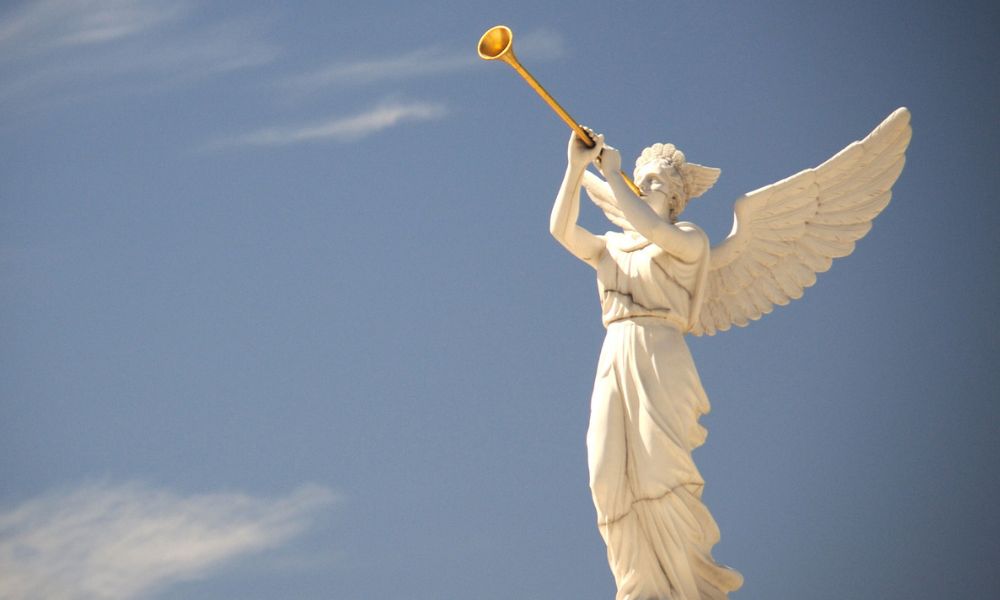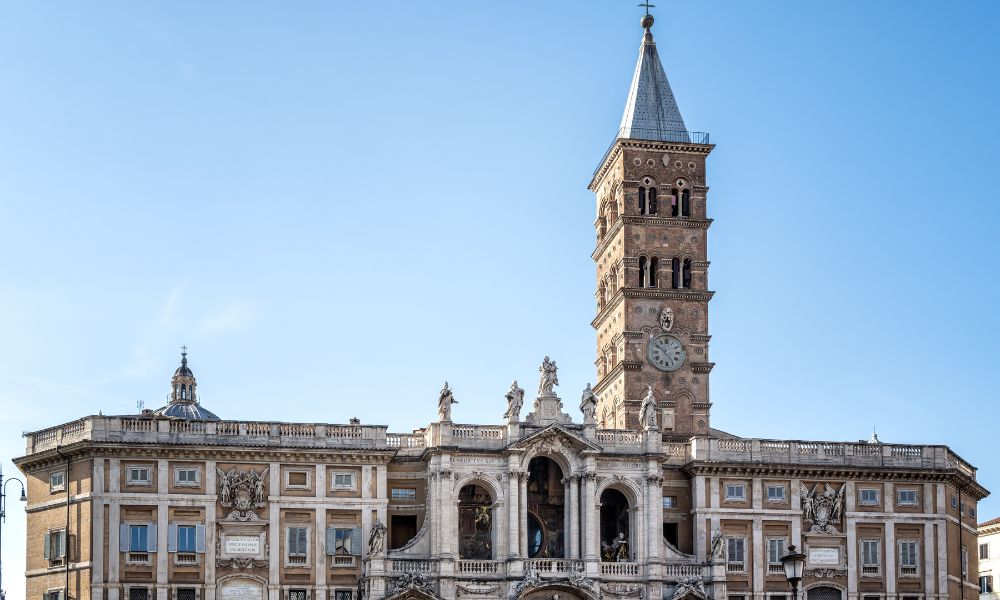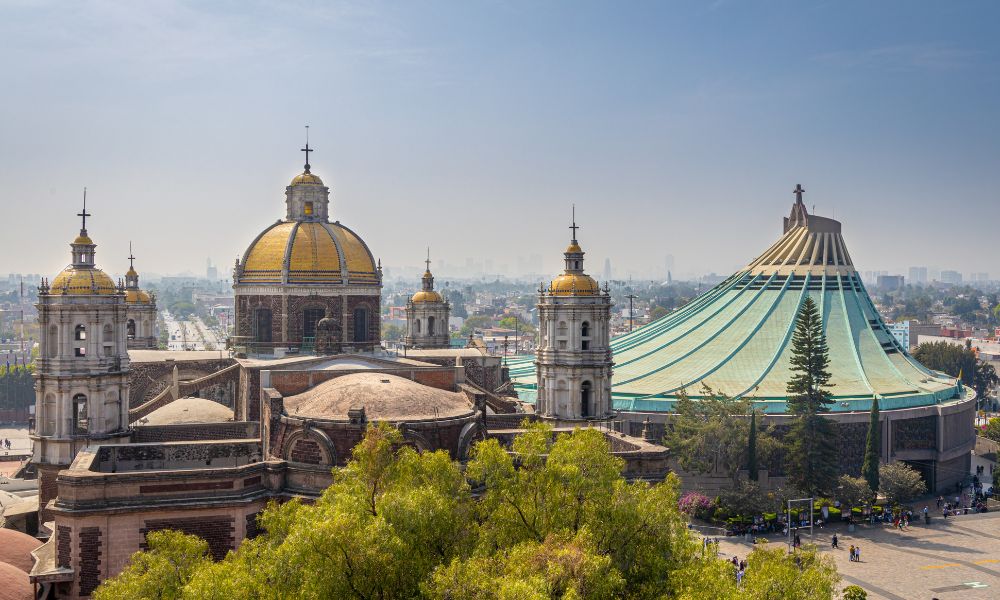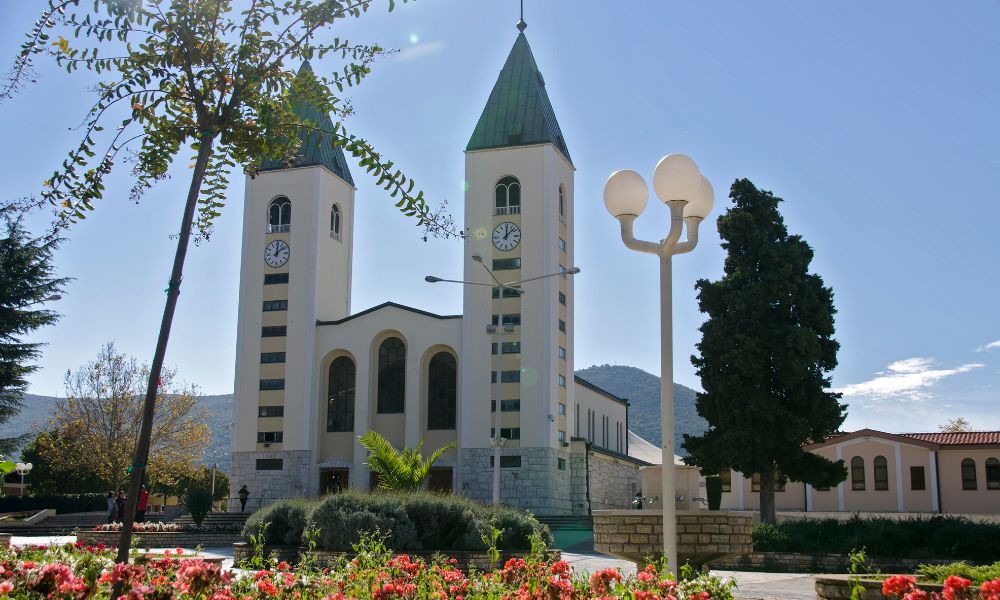
The figure of the Virgin Mary holds a central place in the devotion and theology of Christianity.
She transcends geographical and cultural boundaries to become one of the most venerated and beloved religious icons in the world. From her humble beginnings in a town in Galilee to the grand sanctuaries built in her honor on distant continents, Mary has been a source of inspiration and comfort for millions of faithful.
This guide seeks to explore the life and virtues of Mary, not only as the mother of Jesus but also as an emblematic figure that has profoundly shaped religious practice and spirituality worldwide. We invite you to a deeper encounter, understanding her role as a mediator of grace and a symbol of purity and unwavering devotion.
The life of the Virgin Mary, mother of Jesus, is a narrative of faith, dedication, and continuous presence in key moments of the history of salvation. Over the centuries, her life has been the subject of devotion and admiration in places like the Sanctuary of Fatima and the Virgin of Lourdes, where millions of faithful make pilgrimages annually.
Mary was born in a modest context in Nazareth, a small town in Galilee, surrounded by a family with deep Jewish roots. Her early life, marked by the culture and traditions of her time, would lay the foundation for her future mission as the mother of the Messiah.
Thus, growing up in this place, she was immersed in an environment of simplicity and hard work. These characteristics would define her and be exalted throughout the centuries in Christian devotion.

The Annunciation is one of the most emblematic moments in the life of the Virgin Mary, narrated in detail in the Gospel of Luke. According to the account, the Angel Gabriel is sent by God to the town of Nazareth, where Mary, a young woman betrothed to Joseph, from the house of David, lives. The angel appears to her and greets her with the words: “Hail, full of grace! The Lord is with you.”
At this manifestation, she is troubled, but the angel assures her that she has found favor with God and announces that she will conceive in her womb and bear a son, whom she must call Jesus. This child will be great and will be called the Son of the Most High.
Mary, confused, asks how this is possible since she is a virgin. Gabriel explains that the Holy Spirit will come upon her and the power of the Most High will overshadow her, so the holy child born will be called the Son of God.
Mary’s “yes,” her response of “Behold the handmaid of the Lord; be it unto me according to your word,” is significant from a theological standpoint. This consent marks the beginning of the incarnation of the Son of God and emphasizes the importance of human free will in the plan of salvation.
In her humility and obedience, Mary accepts an unprecedented role as the mother of the Messiah, demonstrating a deep faith and trust in God’s will. Her acceptance not only establishes her as a model of obedience for all Christians but also underscores her co-participatory role in the mystery of Redemption.
This is how she becomes the “New Eve,” whose “yes” undoes the “no” of Eve, opening the door to redemption and grace for all humanity. This act of acceptance is celebrated and meditated upon in many Christian traditions, seen as a pillar of Marian devotion and an example of total surrender to divine providence.
The Gospel of John narrates Jesus’ first public miracle at the Wedding of Cana, an event that significantly highlights the influential role of Mary in his ministry.
During the celebration, when the wine runs out, Mary approaches Jesus with a subtle intervention, saying, “They have no wine.” Although Jesus initially responds that His hour has not yet come, Mary urges the servants to do whatever He tells them.
This interaction culminates in Jesus turning water into wine, an act that not only saves the wedding celebration but also reveals His glory and strengthens the faith of His disciples. This miracle, prompted by Mary’s mediation, highlights her active role in facilitating the manifestation of His divinity.
Throughout His ministry, Mary appears at significant moments, though more discreetly. Her presence is a constant reflection of her support and faith in her son’s mission. In the Gospels, especially in Luke and John, she is portrayed as a figure who deeply meditates and reflects on the events surrounding Jesus’ life.
Additionally, her presence at key events, such as during various preachings and miracles, and finally at the foot of the cross, demonstrates her integral role not only as a mother but also as the first disciple of Jesus.

This profoundly dramatic and painful event is narrated in the Gospel of John. Mary, along with Mary Magdalene and the beloved disciple John, stands by Jesus in His final hours.
Mary’s presence at this moment underscores her strength and unwavering loyalty to her son. Christian tradition has viewed this act as a moment of deep spiritual union between mother and son, as well as Mary’s participation in the redemptive sacrifice of Jesus for the salvation of humanity.
The Acts of the Apostles mention her presence in the Upper Room with the apostles, awaiting the coming of the Holy Spirit on Pentecost. Mary’s role was not limited to being a witness to the early days of the Church but also as a figure of support and spiritual guidance for the growing community.

Devotion to the Virgin Mary is palpable in places like Medjugorje and the Sanctuary of Guadalupe, where thousands of pilgrims gather to pay tribute to her life and virtues.
These places bear witness to the profound and lasting impact of Mary on the Christian faith. Through her actions and character, she exemplifies qualities that are cornerstones for believers: humility, faith, love, and strength.
Humility is evident from the moment of the Annunciation, when she accepts God’s will to be the mother of the Messiah. Her life in Nazareth, living a simple yet dignified existence, reflects this constant humility. Mary never seeks recognition for her role, but lives in complete and loving obedience to God’s plans.
Mary’s life on Earth offers an active model of humility, not passive. Through her acceptance and discreet service, she teaches believers the value of humility in faith and how it can coexist with a deep divine purpose.
From her initial “yes” at the Annunciation to her presence at the foot of the cross, Mary’s life is woven with acts of unshakable faith. At every stage of her life, especially in moments of great trial and suffering, her trust in God never falters.
Furthermore, she serves as a beacon of faith, showing that trust in God must be constant and firm, no matter the circumstances. Her example also motivates believers to maintain their faith, even when facing personal or spiritual trials.
Marian apparitions in places like Medjugorje have emphasized Mary’s role as an intercessor. In each apparition, she presents herself not only as the mother of Jesus but as a mother to all, offering messages of peace and calls to conversion.
Through her life and these apparitions, she shows a love that is universal and accessible. She highlights the importance of compassionate love that transcends human divisions and lifts the spirit of those who suffer or are lost.
Her life was also full of challenges, from the social stigma of her motherhood to the extreme pain of seeing her son crucified. Through all these sufferings, her strength never wavers, maintaining her faith and commitment to God.
Mary’s example as a figure of strength is a powerful reminder for Christians today about the importance of persevering in faith, even in the harshest trials. Her life invites everyone to seek strength in faith and hope, no matter how challenging the circumstances may be.
The apparitions have been moments of profound spiritual and cultural significance in the history of Christianity. These events have strengthened the faith of millions of people and have led to the creation of shrines that attract pilgrims from all over the world. Below, we explore three of the most venerated and recognized Marian apparitions:
The apparition of Our Lady of Guadalupe took place in 1531, on the hill of Tepeyac, near what is now Mexico City. She appeared several times to Saint Juan Diego, a Mexican indigenous man, leaving her image miraculously imprinted on his tilma (cloak).
This image has been the subject of great veneration and has played an important role in the evangelization of the Americas. The Shrine of Guadalupe has become one of the most important pilgrimage centers in the world, symbolizing a meeting point between cultures and a testimony of Marian faith.
In 1917, amidst World War I, the Virgin Mary appeared to three shepherd children in Fátima, Portugal. The apparitions, which took place on the 13th of each month from May to October, brought messages of conversion, prayer, and peace.
The Virgin asked for the consecration of Russia to her Immaculate Heart and the practice of the First Saturday reparative communion. The events in Fátima culminated with the “Miracle of the Sun“, witnessed by thousands of people.
In 1858, the Virgin appeared 18 times to Saint Bernadette Soubirous in the Massabielle cave, near Lourdes, France. The Virgin identified herself as “the Immaculate Conception” and asked for a chapel to be built at the site of the apparitions and for people to come in procession.
Lourdes has become one of the most visited pilgrimage sites in the world, especially famous for its healing waters. Here, thousands of sick and disabled people come each year seeking physical and spiritual healing.
Marian pilgrimages are a vibrant expression of Catholic faith, where millions of believers travel to sacred places dedicated to the Virgin Mary. These shrines serve as centers of deep devotion, spaces for encounter, reflection, and healing for people from all over the world.

This ancient basilica, one of the four major basilicas in Rome, houses a rich Marian history. It is famous for preserving what is believed to be the cradle of Jesus and for its impressive Byzantine and Renaissance art. The basilica is a key destination for those seeking to connect with the historical roots of Marian devotion at the heart of Christianity.

As the most visited Marian shrine in the world, the Shrine of Guadalupe in Mexico is a testament to the apparition of the Virgin to Saint Juan Diego. It is a spiritual center for millions of pilgrims each year, especially during the Feast of Our Lady of Guadalupe on December 12.

This shrine was built at the site where the Virgin Mary appeared to three children in 1917. It is especially known for the Miracle of the Sun and is a center of massive pilgrimage, especially on May 13 and October 13, the anniversaries of the apparitions.

Lourdes is renowned for its miraculous healing waters and the apparitions of the Virgin to Saint Bernadette Soubirous in 1858. This site attracts millions of people each year, including many sick and disabled individuals seeking physical and spiritual healing.

Since 1981, when reports of apparitions of the Virgin Mary were made, Medjugorje has grown from a small village to a prominent pilgrimage destination. Although its apparitions have not yet been officially recognized by the Vatican as supernatural, the site attracts a large number of pilgrims seeking Mary’s guidance and comfort.
Devotion to the Virgin Mary is expressed in various forms through prayers and practices that have been part of Christian tradition for centuries. Among these, the Rosary, novenas, and consecrations stand out as powerful means of spiritual connection and growth in faith.
Its origin dates back to the 13th century. However, it was Saint Dominic de Guzmán who popularized this practice after the Virgin Mary appeared to him and gave him the Rosary as a tool for conversion.
Saint Louis-Marie Grignion de Montfort is one of the greatest promoters of this practice. He proposed an act of total surrender to Jesus Christ, through the hands of Mary, as a means to achieve perfect holiness. This consecration is usually carried out after a period of spiritual preparation lasting 33 days.
Stay Connected with WayHoly
Discover your perfect pilgrimage and be the first to know about new journeys. By subscribing to our newsletter, you’ll receive the latest updates on pilgrimages, exclusive offers, and spiritual resources to enrich your faith journey.
Don’t miss the opportunity to deepen your connection with God and lead others on their path to spiritual renewal. Join us today and become an instrument of His Will through WayHoly!
“To upload your pilgrimage, please choose one of our plans and create an account, or log in if you’re already a member. Join us in guiding others on their spiritual journey.”